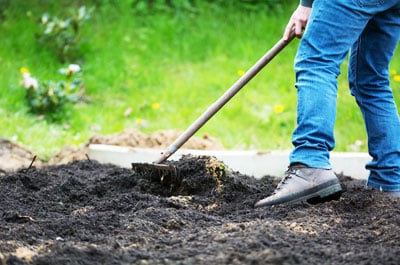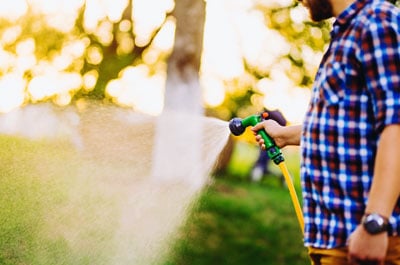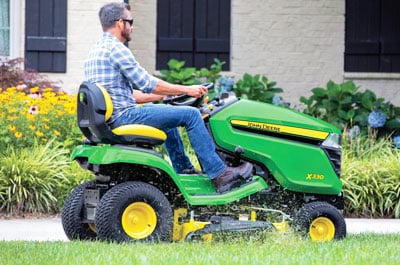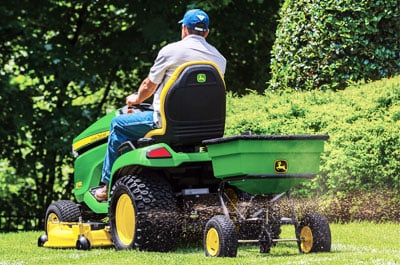The Answers You Need
St. Augustine and Zoysia grass both need 2 or 3 waterings per week during the summer and 1 or 2 waterings the rest of the year in Florida.
You will want to wait 30 days after installing your new sod to apply fertilizer, to give it time to take root and acclimate to your yard.
You should wait 14 days for your first mow to avoid any damage to the roots.
It is best to wait at least 2 weeks to walk on your new sod. That way you give your new sod roots time to grow.
Pre-installation

New sod care starts before it is even installed. The soil on which you are going to install the sod must be watered well prior to installation. Dry soil could remove all the moisture from the sod, making it harder for it to take root. It is also a good idea to treat the soil with a pre-plant fertilizer before the sod is installed.
Sod has a short shelf-life and cannot be stored in your side yard or garage for a long time. The Florida heat would build up and damage the roots and surface of the sod. Sod should be installed as soon as it is delivered, especially in humid subtropical regions like Florida.
Post-Installation Measures
First Day:
Immediately water your new sod after it is installed. Liberally irrigate it until the water penetrates at least a few inches into the soil—it will feel soggy to walk on. Check the sod every few hours. If the ground does not still feel soggy, water it again. It is nearly impossible to overwater new sod.
First Two Weeks After Day One:
New sod has small roots, so it can only absorb so much water at a time. Thus, you should irrigate the sod multiple times a day for short periods of time. Schedule watering in the morning and afternoon hours. If you water it in the late evening or at night, there is more chance of a fungus problem arising.
Depending on the temperature, you should water it 2 to 6 times a day for 4 to 6 minutes at a time. The hotter it is, the more you should water it. The goal is to keep the sod and soil underneath moist, but no longer soggy, throughout the day.
Try to stay off the sod for the first two weeks. The roots need time to take hold and dig in. It will not be ready to mow until around the 14-day mark. Ease up on the watering schedule the day before you plan to mow, as this will allow the soil to firm up. Set your mower’s cutting level to high. You do not want to cut more than the top one-third of the blades of grass.
Troubleshooting Tips:
- If the sod does not take root within 14 days, gradually adjust the watering schedule. Water the sod less frequently, but for longer periods. Keep in mind that shady areas may take longer to root.
- If the sod begins to turn brown or shrink to where you can see gaps at the seams, it needs more water! Increase the frequency of watering cycles or the length of each cycle. Also, make sure that the sprinklers are reaching that area. It is also a good idea to hand-water the problematic areas until its health status improves. If any edges are raised, press down on them with your foot after watering.
After Two Weeks

Now that you’ve mowed it for the first time, gradually decrease the number of times you water per day but increase the length of time for each cycle. Now that the roots are well established, they can handle larger quantities of water. Keep repeating this process of reducing the frequency of watering gradually over the next few weeks until you are irrigating the grass once per day and eventually only one to three times per week, depending on the season.
Troubleshooting Tip:
- Again, if the sod begins to turn brown or shrink to where you can see gaps at the seams, it needs more water! Increase the frequency of watering cycles or the length of each cycle. Also, make sure that the sprinklers are reaching that area. It is also a good idea to hand-water the problematic areas until its health status improves. If any edges are raised, press down on them with your foot after watering.
Correct Way to Mow your Fertilized Lawn

If you want the turf to look healthy, to be thick to crowd out the weeds, and to be drought-resistant, then you must understand the right way to mow. You should not be scalping the lawn completely while mowing it as this makes the surface sparse, weak, and more vulnerable. Remember not to mow down more than the top one-third of the grass during a mowing cycle. Sparse lawns leave the soil exposed for weed seedlings to take root and for sunlight to reach these seedlings, thus making it prone to weed infestation. Not sure what kind of weeds you have? Check out the most Common Weeds in Florida to help you narrow it down.
Before you start mowing, make sure that your mower blade is sharpened properly. Sharpening the blade gives the grass a clean-cut without tearing the grass and does not leave uneven and jagged edges. If you use a dull and blunt blade, your lawn may develop a brownish white hue, and the tears from blunt blades would create openings for diseases and pests.
In warm and sunny places like Florida, you must allow your grass to grow a little taller, as these tall blades would create shade for the soil. This height helps reduce weed infestations and keeps the soil moist for longer. The process of photosynthesis is also better on surfaces of long grass blades, thus giving your lawn a healthy glow.
Fertilization

The right use of chemicals and fertilizers is essential for healthy grass growth and to mitigate the risks of diseases by keeping insects at bay. If the sod is newly installed, you should wait for at least a month after installation before you use any fertilizers. Lime and sulfur, along with the right liquid fertilizers, can be added to the soil depending on the soil test and the type of sod you are choosing. You can determine the pH levels of the soil through a store-bought pH test.
Strains of St. Augustine grow at a pH level of 6 to 6.5. If the test result shows higher pH levels, then you can add sulfur to the soil to reduce these levels. Pelletized Sulphur of up to 5 lbs. can be used for every thousand square feet of turf. Keep in mind that sulfur can only be added when the air temperature is below 75°F.
You should also add 1 to 2 pounds of nitrogen per thousand square feet of turf to the soil 2-3 times per year. Using a high potassium fertilizer along with the actual nitrogen, keeps the soil healthy and vibrant. To add to this green glow, you can also use iron sulfate or any soluble iron product between the fertilization.
Other Important Points
You should also keep the following in mind for proper sod and lawn maintenance care:
- Core-Aerification of the soil must be done for the first few years after new sod installation. This helps in preventing the soil from getting compacted.
- If you see some brownish material above the soil and below the grass blades, that could be a thatch. Thatches that are longer than three-fourths of an inch can be harmful to the lawn in the long term. Regular dethatching can help prevent this.
- Clippings are the smaller parts of the grass blade that fall on the lawn as a result of mowing. Unless the clippings are excessively long, do not remove them from the lawn as they recycle the nutrients back into the soil. Although it seems like a lot to do for maintaining the sod and the lawn, if you follow the proper discipline and pay attention to the details, it will soon seem like the lawn is taking care of itself. Just a couple of weeks after installation, you will have a great place to play with your kids and pets. And with a little TLC, your beautiful lawn will last for decades to come.